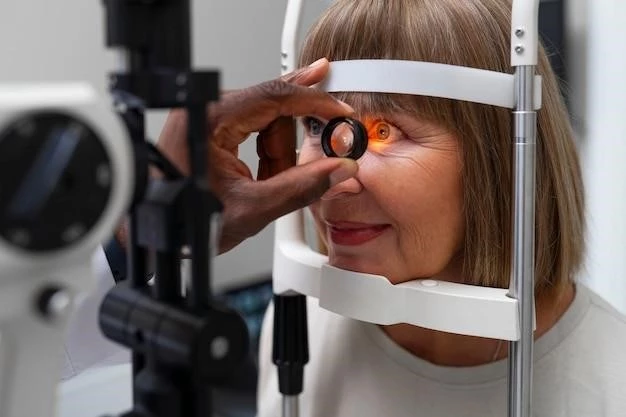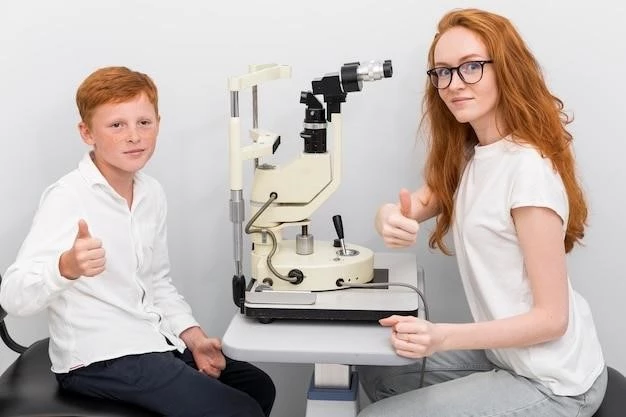Introduction to Spastic Paraplegia Glaucoma Precocious Puberty
The rare genetic disorder of ‘Spastic Paraplegia Glaucoma Precocious Puberty’ manifests with unique symptoms involving spasticity, puberty, and glaucoma․ Patients may experience a range of challenges affecting their nervous and reproductive systems․
Overview of the Rare Genetic Disorder
The Spastic Paraplegia Glaucoma Precocious Puberty syndrome is a rare genetic condition characterized by a combination of symptoms such as spastic paraplegia, precocious puberty, and glaucoma․ The syndrome manifests with varying degrees of spasticity, early puberty onset, and visual disturbances․ Individuals affected by this disorder may face challenges related to both their nervous system and reproductive health․

Understanding Spastic Paraplegia and Precocious Puberty
The Spastic Paraplegia Glaucoma Precocious Puberty syndrome, a rare genetic disorder, combines spastic paraplegia, precocious puberty, and glaucoma, affecting the nervous and reproductive systems․
Definition and Symptoms of Spastic Paraplegia
Spastic Paraplegia Glaucoma Precocious Puberty syndrome combines symptoms of progressive spasticity in the lower limbs, early puberty onset, intellectual deficits, and visual impairments․ It can manifest with varying degrees of stiffness, muscle weakness, and premature development of secondary sexual characteristics, impacting both the nervous and reproductive systems․
Precocious puberty in the Spastic Paraplegia Glaucoma Precocious Puberty syndrome is triggered by Leydig cell hyperplasia, leading to the early development of secondary sexual characteristics․ This premature puberty, along with spastic paraplegia, intellectual deficits, and possible genetic inheritance, defines the complex nature of the disorder․
Characteristics and Causes of Precocious Puberty
Leydig cell hyperplasia triggers early puberty in spastic paraplegia, leading to the development of secondary sexual characteristics․ This unique interplay between genetic factors and hormone production characterizes the complex nature of the syndrome․
Genetic Heterogeneity of HSPs
The Spastic Paraplegia Glaucoma Precocious Puberty syndrome, with its genetic complexity, showcases a range of symptoms linked to corticospinal tract dysfunction․ The disorder’s genetic heterogeneity contributes to its variability in clinical presentation and inheritance patterns, posing challenges for diagnosis and treatment․
Molecular Pathways and Inheritance Patterns
The syndrome’s molecular pathways involve the interaction of genetic factors leading to corticospinal dysfunction․ With a complex genetic basis and variable expression, inheritance patterns contribute to the diverse clinical manifestations observed in individuals with the Spastic Paraplegia Glaucoma Precocious Puberty syndrome․
Diagnosis and Treatment of Spastic Paraplegia-Precocious Puberty Syndrome
Early diagnosis and targeted treatment are crucial for managing the complex symptoms of Spastic Paraplegia Glaucoma Precocious Puberty syndrome․ Physicians use a combination of genetic testing, clinical assessments, and hormone evaluations to accurately diagnose and create personalized treatment plans to address the unique challenges of this rare genetic disorder․
Diagnostic Procedures for the Rare Genetic Disorder
Diagnosing the Spastic Paraplegia Glaucoma Precocious Puberty syndrome involves a comprehensive approach, including genetic testing to identify associated mutations, hormonal assessments to detect early puberty markers, and neurological evaluations to assess corticospinal tract dysfunction․ These diagnostic procedures aim to provide clinicians with a detailed understanding of the patient’s condition, guiding them in formulating tailored treatment plans․
Available Treatment Options and Therapies
Managing the Spastic Paraplegia Glaucoma Precocious Puberty syndrome involves a multidisciplinary approach․ Treatment may include physical therapy to address spasticity, hormone therapy to manage precocious puberty, and educational support for intellectual deficits․ Additionally, genetic counseling and family support play crucial roles in navigating the complexities of this rare genetic disorder․

Impact on Nervous System and Reproductive System
The Spastic Paraplegia Glaucoma Precocious Puberty syndrome affects the nervous and reproductive systems, leading to muscle stiffness, weakness, early puberty, and intellectual deficits․ This rare genetic disorder poses challenges that influence both physical and cognitive aspects of individuals affected by it․
Effects on the Nervous System
The Spastic Paraplegia Glaucoma Precocious Puberty syndrome primarily impacts the nervous system, leading to progressive muscle stiffness, weakness, and spasticity in the lower limbs․ Individuals may experience challenges with motor control, coordination, and intellectual functions due to the complex interplay of symptoms affecting the nervous system․
Implications on the Reproductive System
In the context of the Spastic Paraplegia Glaucoma Precocious Puberty syndrome, implications on the reproductive system involve Leydig cell hyperplasia triggering early puberty, leading to the premature development of secondary sexual characteristics․ This genetic disorder’s impact on the reproductive system contributes to the complexity of symptoms experienced by affected individuals, intertwining with the neurological manifestations of the syndrome․
Research and Support for Individuals with the Syndrome
Recent studies have identified cases of individuals with Spastic Paraplegia Glaucoma Precocious Puberty syndrome, shedding light on potential genetic factors contributing to the disorder’s complex symptoms․ Research efforts aim to improve diagnosis accuracy and treatment outcomes, while support groups provide invaluable resources for affected individuals and their families, offering guidance and emotional assistance;
Advancements in Research on Spastic Paraplegia-Precocious Puberty Syndrome
Recent studies have identified cases where Leydig cell hyperplasia induces progressive spastic paraplegia and precocious puberty, shedding light on potential genetic factors contributing to the disorder․ This research provides valuable insights into the complex symptoms and inheritance patterns associated with the syndrome, aiding in better diagnostic and therapeutic strategies for affected individuals․
Support Groups and Resources for Patients and Families
Community groups and support organizations play a vital role in providing assistance and information to individuals and families affected by the Spastic Paraplegia Glaucoma Precocious Puberty syndrome․ These support groups offer valuable resources, emotional support, and a sense of community for those navigating the challenges associated with this rare genetic disorder․ Accessing these specialized resources can significantly enhance the quality of life for both patients and their families․
Case Studies and Familial Inheritance Patterns
In a reported case, two brothers experienced progressive spastic paraplegia and precocious puberty due to Leydig cell hyperplasia, suggesting autosomal dominant inheritance with variable expression․ This familial pattern sheds light on the complexity of the syndrome’s genetic transmission and clinical variability․
Reported Cases of Spastic Paraplegia and Precocious Puberty
Reported cases of the Spastic Paraplegia Glaucoma Precocious Puberty syndrome highlight instances where Leydig cell hyperplasia triggers progressive spastic paraplegia and precocious puberty․ One documented case involves two brothers who displayed these symptoms at the age of 2, later developing moderate intellectual deficits․ The familial pattern observed in this case, with brisk reflexes and dysarthria in multiple family members, suggests autosomal dominant inheritance with varied expressions, emphasizing the complex nature of the syndrome․
Familial Patterns and Variable Expressions
A documented case of two brothers with Spastic Paraplegia Glaucoma Precocious Puberty syndrome showcased Leydig cell hyperplasia triggering spastic paraplegia and early puberty onset at age 2․ The subsequent presence of moderate intellectual deficits and brisk reflexes in other family members pointed towards autosomal dominant inheritance with variable clinical expressions, highlighting the intricate genetic transmission and diverse manifestations within families affected by the syndrome․
Outlook and Prognosis for Individuals with the Disorder
Individuals with the Spastic Paraplegia Glaucoma Precocious Puberty syndrome face a complex outlook due to the interplay of nervous and reproductive system complications․ Early diagnosis and comprehensive treatment can significantly impact the prognosis, with ongoing research and support fostering hope for enhanced quality of life․
Long-Term Prognosis and Quality of Life Considerations
Individuals affected by the Spastic Paraplegia Glaucoma Precocious Puberty syndrome may experience long-term challenges related to mobility, intellectual function, and reproductive health․ Early intervention and personalized care can positively impact the prognosis, while ongoing research and support services aim to enhance the quality of life for those living with this rare genetic disorder․
Conclusion⁚ Promoting Awareness and Understanding of Spastic Paraplegia Glaucoma Precocious Puberty
Enhancing awareness and understanding of the complex presentation of the Spastic Paraplegia Glaucoma Precocious Puberty syndrome is crucial․ By highlighting reported cases, familial inheritance patterns, and the impact on the nervous and reproductive systems, we aim to foster knowledge, support research efforts, and improve the quality of life for individuals and families affected by this rare genetic disorder․
